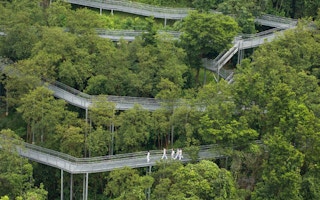The Singapore government through the Centre for Liveable Cities (CLC) has renewed its partnership with the Danish Architecture Centre (DAC), marking the continuation of the two countries’ collaboration towards building sustainable and liveable cities.
The agreement, which was signed on June 3 on the sidelines of the four-day World Cities Summit in Singapore, looks to extend the urban governance exchange programmes that the two centres have started last year, a statement from the summit said.
The CLC runs various urban governance programmes for city leaders, policy makers, and urban planners who would want to gain more understanding about Singapore’s city planning model. Through its Leaders in Urban Governance Programme (LUGP), CLC teamed up with DAC, which also runs a similar programme called Strategic Urban Governance Programme (SUG). The exchange programme gave opportunity for local public officials enrolled in both programmes to participate in site visits to both countries.
CLC, which was established by Singapore’s Ministry of National Development and the Ministry of the Environment and Water Resources in 2008 and one of the main organisers of the summit, is involved in research and capability development on how to make Singapore a more progressive and environmentally responsible city.
Meanwhile, DAC is public-private partnership between philanthropy organisation Realdania and the Danish government, which focuses on the development and dissemination of knowledge about architecture and urban planning.
CLC executive director Khoo Teng Chye noted on the success of the programme and the strong friendships built among participants. “After the successful exchange programme for Singaporean and Danish directors last year, we are pleased to work with DAC on the second edition this year,” explained Khoo.
“
Denmark and Singapore are two small countries, but they are both absolutely world-leading in terms of making cities liveable and more sustainable and a great inspiration for cities around the world
Fleming Borreskov, chairman, Danish Architecture Centre
About 65 government directors from Singapore and Denmark have benefitted in the exchange programme, the statement added.
The partnership also paved way for dialogues in Singapore with notable urban leaders, such as Copenhagen’s mayor of administration and chair of the culture and leisure committee Pia Allerslev and world-renowned architect and professor Jan Gehl, CLC said.
Subsequently, CLC hosted 19 Danish executives for site visits in Marina Barrage, the city-state’s largest reservoir, as well as the famous Southern Ridges nature park as part of the inaugural exchange programme. This year, 15 government officials from Denmark also participated in a study visit and attended the summit.
“Denmark and Singapore are two small countries, but they are both absolutely world-leading in terms of making cities liveable and more sustainable and a great inspiration for cities around the world,” noted DAC chairman Fleming Borreskov, adding that the agreement particularly strengthens the good relationship between CLC and DAC.
Copenhagen ranks high among global liveability indices, while Singapore tops in Asia in quality of living surveys. Both countries are also highly commended for its initiatives to promote efficient public modes of transport.
During the summit, CLC also reaffirmed its research collaboration with the Urban Land Institute (ULI) on how communities can be made more liveable and presented the results of their collaborative research work on ‘Active Mobility’ with Jan Gehl. The research revealed that through careful urban planning, hot and humid Singapore can possibly implement a robust cycling and walking culture.
More than 130 participants, including mayors and city leaders, researchers and urban planners, discussed and debated what makes a ‘smart city’ at the summit, the organisers said - and reached a broad agreement that a smart city must be ‘green’ and should be sustainable and liveable.

















